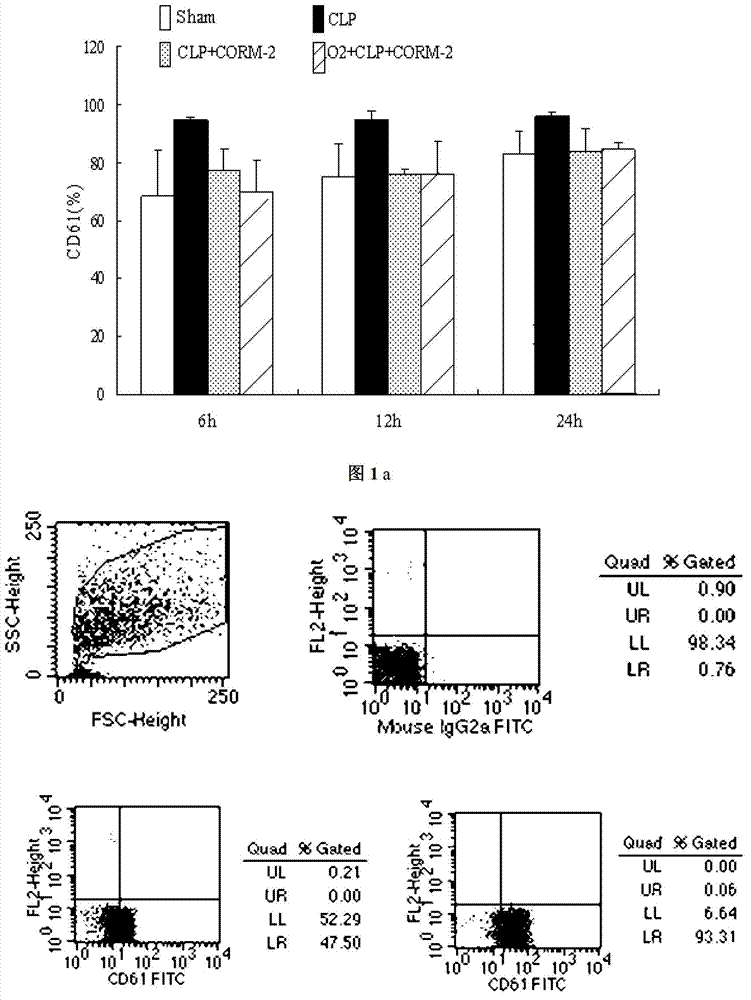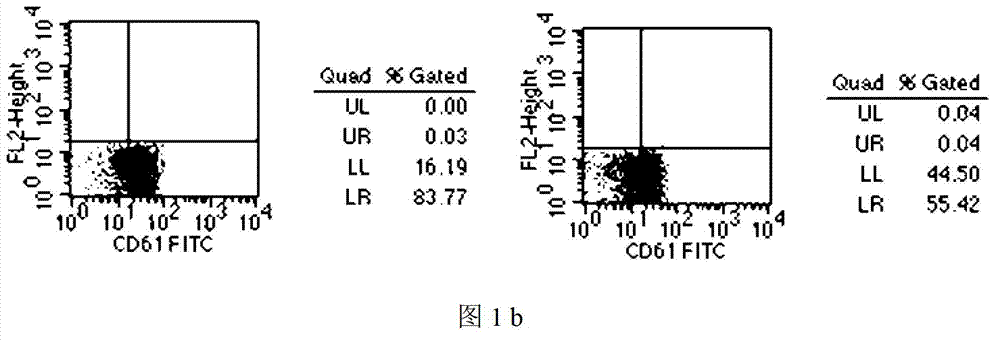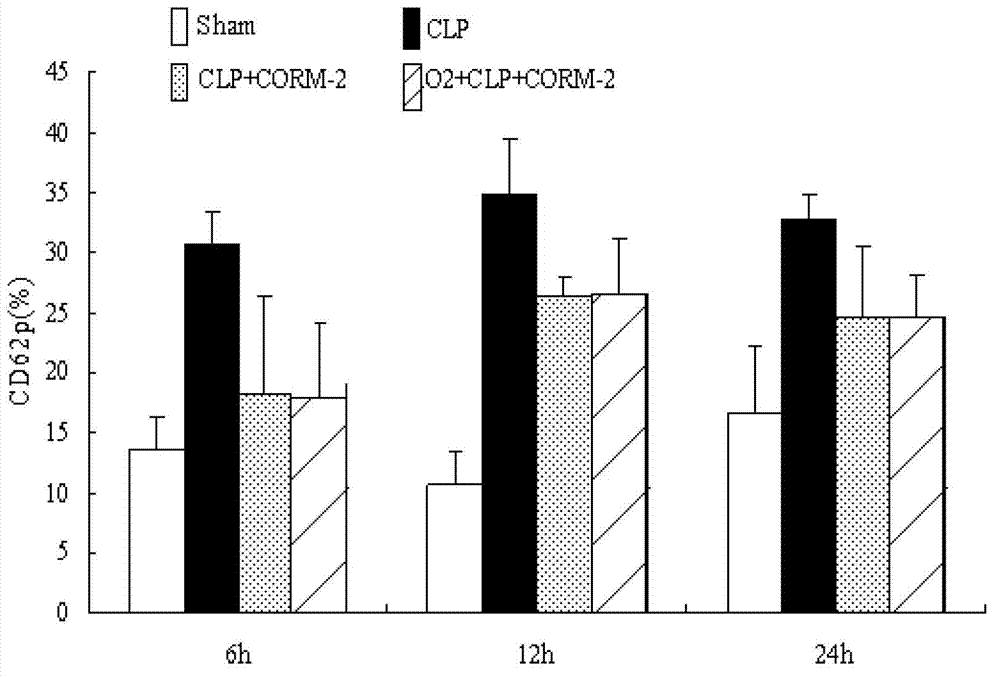Application of carbon monoxide releasing molecules in preparing medicines for inhibiting blood coagulation activation diseases
A technology for inhibiting blood coagulation and carbon monoxide, applied in blood diseases, drug combinations, extracellular fluid diseases, etc., can solve the problems of additional dosage, complex devices, high HbCO, etc., achieve concentration control and accuracy, meet clinical application, and easy concentration control Effect
- Summary
- Abstract
- Description
- Claims
- Application Information
AI Technical Summary
Problems solved by technology
Method used
Image
Examples
Embodiment 1
[0025] Inhibitory effects of exogenous carbon monoxide releasing molecules (CO-RMs) on platelet membrane glycoproteins and platelet activation in sepsis
[0026] experiment method:
[0027] 1 CLP animal model
[0028] 6-8 week old C 57 BL / 6 mice, weighing 20±2g, are all male. The mice were anesthetized by inhalation of 2% isoflurane, and a 1-1.5 cm incision was made below the midline of the abdominal wall to find the cecum, and a 3-0 thread was used to ligate 1 / 2 of the total length of the cecum, taking care not to cause intestinal obstruction. Do not damage the ileal artery. A single puncture is made in the cecal wall with a 20-gauge needle, and the cecum is gently squeezed so that a small amount of intestinal contents overflow at the puncture site to ensure complete perforation, paying close attention to maintaining continuity between the small and large intestines. Examination of mice in different parts of the gut after CLP did not reveal the presence of intestinal obst...
Embodiment 2
[0093] Effects of exogenous carbon monoxide releasing molecules (CO-RMs) on platelet HS1 phosphorylation in sepsis
[0094] The excessive activation of coagulation system in sepsis promotes the development of sepsis, which further develops into septic shock. Platelets play a very important role in this complex interaction process, which is mainly reflected in the excessive activation of platelets and the occurrence of massive Adhesion and aggregation, leading to pathological thrombus formation. The main platelet membrane glycoproteins GPⅡb / IIIa (ie CD41 / CD61), CD62p, etc. mediate the above pathological process. Hematopoietic cell-specific protein-1 (HS1) is a key signaling molecule in the activation process of platelets after stimulation, and the activation signals of the above-mentioned important platelet membrane glycoproteins are all transmitted through HS1. Therefore, inhibiting the expression of membrane glycoproteins, or blocking HS1 signal transduction, thereby inhibitin...
PUM
 Login to View More
Login to View More Abstract
Description
Claims
Application Information
 Login to View More
Login to View More - R&D
- Intellectual Property
- Life Sciences
- Materials
- Tech Scout
- Unparalleled Data Quality
- Higher Quality Content
- 60% Fewer Hallucinations
Browse by: Latest US Patents, China's latest patents, Technical Efficacy Thesaurus, Application Domain, Technology Topic, Popular Technical Reports.
© 2025 PatSnap. All rights reserved.Legal|Privacy policy|Modern Slavery Act Transparency Statement|Sitemap|About US| Contact US: help@patsnap.com



